Your guide to VR: understand the market and find business opportunities
By Antoine RibordyI violently stirred left to lose him. It worked!
Ha ha! I triumphantly brought my plane back up to be on his tail.
I never saw it coming… and went down in flames.
The dreaded “Game Over” popped up.
I removed my headset and looked at my friend: “Cool!”.
It was 1992. The game, Flying Aces (I had to look the name up). My first VR experience.
The headset was massive and heavy. It was hard to move your head. The graphics and the resolution were crap. And it cost me £2 ($5 at the time) for a three minute session!
But it was a dream come true. I had been dreaming about VR since I had first heard about it. As a late teen, it was a big thing!
After that, I never played again. And VR went into oblivion. Relegated to universities.
Until 2012…
That’s the year Palmer Luckey launched a kickstarter for his Oculus Rift.
Today we’re seeing an explosion of VR headsets, controllers and other accessories. Crowd funding campaigns are popping everywhere for exotic peripherals and original content. Companies like Facebook (who bought Oculus for $2 billion), Google, Sony and Microsoft have injected a lot of money in the market.
The combined AR & VR market is expected to grow to $120 billion by 2020 ($30 billion for VR only).
In the face of this technological and content orgy, it’s hard to find your bearing.
What’s the future of VR? Where are we headed? How quickly will people adopt VR? Who are the dominant players that will emerge?
These are important questions to ask yourself when you want to position your products, when you need to decide where you should focus your efforts.
How do you know whether you should even bother becoming a VR creator? Is it the next big thing or just a fad?
That’s what we’re going to explore today. We’re going to analyze the VR market, so you can confidently make the VR jump when you’re ready.
Here’s the menu:
- The VR Illusion
- Why U No Buy VR?
- Content Is King
- A Window Into Another World
- Can You Feel It?
- Let’s Move!
- Did You Hear That?
- The Future Is Starting Now
- Evolution
- Where Will You Be In 5 Years?
To understand it, we first need to go back to basics.
The VR illusion
What do you need to make a virtual experience seem real?
To recreate the illusion of reality, you need to target all five senses. This is no easy task.
But here’s the good news: three senses already give you something compelling. These senses are: sight, hearing and touch. Most VR companies focus on those three.
If you can feed these senses with an experience close to reality, more people will make the jump to VR.
One extra thing. To explore your environment, you need to move around. So, you also need a motion control solution.
Then comes the content itself. Storytelling, amazing environment and compelling characters make for a visceral experience.
Senses and content are what really matters. And we’ll explore them further to understand the VR market.
But first, we need to consider the key elements influencing the adoption of a new technology.
Why U No Buy VR?
When something is truly compelling, price isn’t much of an issue. Still, above a certain threshold, you’ll meet a lot of resistance that will impact mass adoption.
Today, VR is expensive. If you want to use the Oculus Rift or the HTC Vive, you’re looking at spending $1500+.
You need a high-end PC to run the content at the high resolution VR requires. Granted, you can bring this price down to under $1000 if you buy a second-hand PC. But this is not what most people will do.
When you can run a full VR experience from a laptop, or better, a phone, adoption will accelerate. Today, the experience you get with a phone is not compelling enough and not comfortable (you get motion sickness).
The arrival of the Playstation VR, which runs from a PS4, will certainly help with adoption. But it still won’t be enough for real mass adoption in the short term.
The other key element influencing mass adoption is social norms. Today, there’s a clear stigma about wearing a headset on your head that blocks out the physical world around you. That’s one of the reasons why the planned growth of AR is higher than VR.
Longer term, I think VR has more potential to change the world than AR. But to get there, we’ll have to reduce the size of headset to almost nothing. And make the experience so compelling that people will prefer spending their time in virtual reality than the real one.
In short, due to price constraints, we shouldn’t expect significant adoption of VR before 2020. And social norms will probably still restrict its growth for the next 3 to 5 years after that.
Now, let’s explore further each element of the VR equation, to give you a better understanding of where we are in each area. It will highlight opportunities and help you make prediction on where the market is heading.
Content Is King
How do you convey a compelling experience?
You need:
- A gripping story
- Convincing, natural interactions with the world
- An environment, characters, animation and environment effects (wind, fire, water,…) that are close to reality
- A seamless performance (no latency, no screen tearing)
Today, VR storytelling is in its infancy. We’re discovering and re-discovering ways to tell stories. It’s opened up massive opportunities for creative, often simple, narratives.
It’s a new medium that’s going to complement traditional cinema and how we experience stories.
If you can master VR storytelling, you’ll be in a great position to shape the future of the field. It’s not by chance that I founded The VR Tales and have chosen to focus on this aspect of VR. I haven’t mastered it yet, though.
VR goggles give you a unique, lifelike experience. As you experience presence in VR, you expect characters to feel real. As you’re using your social interactions skills to interact with others, you’ll notice anything that is slightly out of the ordinary.
Any “faux-pas” in the interaction will stand out quickly and break this illusion.
This is an area where lots of resources are spent to tackle the existing challenges. It’s going to take a while. But once it’s taken off, social VR is going to be huge. We’re social creatures after all!
Today, we’ve got the tools to create photo-realistic experiences. Also, you can get cheap 3D scanners to capture people and the environment and generate 3D models of them. The same goes for animation. You can capture motion at a low price.
This part is not that much of a challenge. If you’re looking for opportunities in VR, I would look elsewhere, since this area is already well covered by many companies.
One thing we don’t have is the hardware to run this environment in real time at a very high resolution. The headset screen resolution at which you’re not able to see pixels anymore is above 6k. Today we can achieve 2.5k at a high enough framerate to minimize motion sickness.
But it’s only a matter of time until we can run VR at 6k. Moore’s Law says the performance of chips doubles every 18 months or so. If you leverage it, you can predict when you’ll get the desktop graphic power for 6k (about 3-4 years from now). And when you’ll get it on a laptop (6-8 years from now).
Content is king, but hardware can ruin the experience. So it will be a bottleneck for a little while. A bottleneck you need to be aware of when you get involved in this industry.
Now, let’s dig into the hardware.
A Window Into Another World
The saying goes: “Seeing is believing”. And here’s my angle: your brain can be tricked into believing through your eyes.
Any VR experience starts with sight. And headsets are still the main focus of the VR market right now.
To cover headsets, I’ll expand into Augmented Reality (AR), also called mixed-reality.
The market is divided in three main sectors:
- The entry level, smart phone powered headsets. Main actors: Google Cardboard and Gear VR.
- The high-end, PC powered models. Main actors: Oculus Rift, HTC Vive and Playstation VR.
- The AR systems. Main actors: Hololens, Meta, Magic Leap.
There’s ton of headsets, at different price levels. I won’t list them all. I’ll focus on the most promising ones.
Let’s take a step back. Ideally, what should a VR headset look like?
For me, an ideal VR system should use a light and cheap wireless headset. And it should give me the full VR experience I can get with high end systems. This is the target I have in mind.
But here’s the thing: today’s technology is not up to the task. That’s why the market is fragmented. It will improve as technology progresses.
Now, entry level solutions are here to give everyone a glimpse of what VR is all about. As most people own a smart phone, the barrier of entry is low. That means faster adoption!
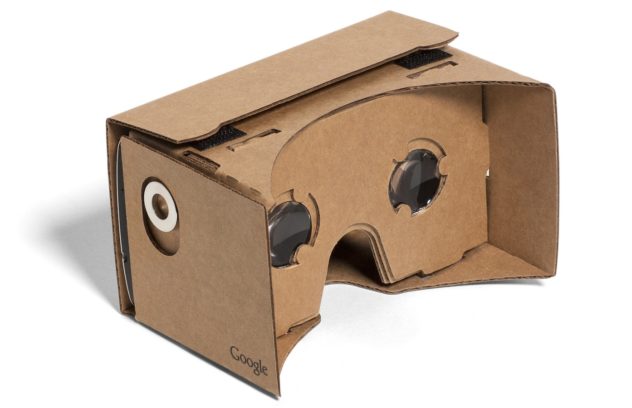
The install base of Google Cardboard owners alone amounted to more than 5 million at the beginning of 2016. And it’s predicted to grow to 23 million by the end of that year. The install base of Gear VR is smaller due to its price ($72 on Amazon) and the restricted number of phones it supports (a few Samsung phones).
Sadly, because of their lower graphical quality and clunky controls, experiences on mobile devices tend to be limited.
To get a full-blown VR experience, with real presence, a complete universe and complex stories, you need to move to high-end solutions (more on that latter). So, if you want to design a full-blown experience yourself, this where you should focus.
Here are the key components of a quality visual experience:
- Wide field of view
- High framerate (how many video frames are generated each second)
- High resolution
- No screen tearing
- No latency (very low delay between the movement of your head and the update of the displayed image)
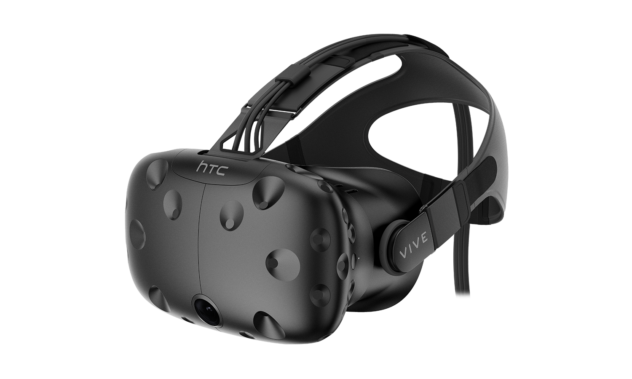
Today, the HTC Vive offers the best experience. But the difference with its competitors is small enough to keep them in the race.
A key factor with high-end systems is the computer you need to power games and experiences that are displayed on the headset. You either need a home console (PS4 here) or a high-end PC. It’s key because it will limit the speed of adoption of VR systems (price barrier).
Today, because of the PS4 install base, the Playstation VR is in the best position for mass adoption.
Now, because of early adopters and PC enthusiasts, the first sales of high end systems have been encouraging. But as time passes, it should be clear that the Playstation VR will veer ahead of the other two. This, unless they become compatible with a home console, like the Xbox One.
But until then, your best bet is the Playstation VR.
That said, it’s easier to develop for the Vive or Rift, as you can build programs without special licenses, code and test everything on the same computer. With Playstation VR, you need a special license, a computer to develop the software and a PS4 to test it.
But wait, now there’s a newcomer, here to confuse us all!
It’s called Daydream and it’s coming from Google. It’s aim is mostly to provide a high-end experience, without the need for a high-end PC and without the cumbersome wires to the headset. In a nutshell, it’s a software platform aimed at hardware solutions built around a comfortable, smart phone powered, headset and a controller.
It’s not been released yet, but should arrive shortly. You can already develop for it. We’ll see how it pans out, but it could become a major platform, with hardware that could replace both the current Cardboard and Gear VR.
Finally, we have the, not yet released, AR systems. The one coming out the soonest is Meta. You can already pre-order a development kit if you want. So you can test it for yourself. You can find it here. It won’t ship before Q3 2016 though.
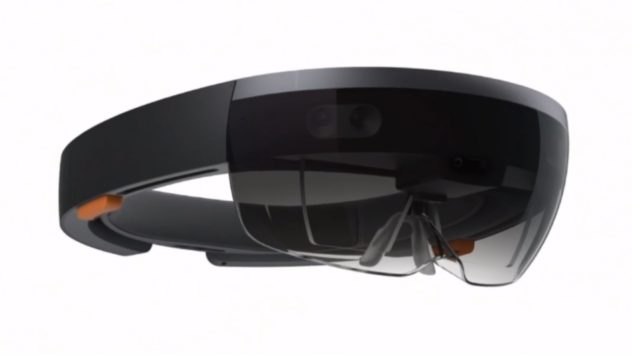
You’ve probably seen demo videos of the Hololens, so you have an idea of what it does. There’s no announced release date and no specs yet, so it’s hard to judge its performance compared to the other two main AR solutions. You can order development versions of it if you want to get started developing for it.
Magic Leap have kept their system wraps. But it seems to be based on a device that projects images directly on the retina. It looks like they got rid of resolution issues.
Lately, Magic Leap have started feeding more information on what they’re doing. So I’m hoping we’ll soon get a full reveal of what the product really is, hopefully in 2016. You can find more about Magic Leap here.
Remember I mentioned you had to move to a high-end system to experience a full-blown VR experience?
Here’s the reason. One key difference between mobile and PC powered VR is head tracking.
Head tracking records the position of you head in space. If you’re crouching or leaning forward, what’s displayed on the headset should match what you expect in the physical world. That means wherever you head is, you expect the virtual world to reflect that position.
In mobile-powered headset, there’s no tracking of your head. So if you lean forward or crouch, your headset won’t reflect it.
This is where the “high-end” solutions come in and one of the main reasons for focusing on the high-end. Head tracking give you a feeling of presence. It’s what makes VR so convincing.
Each VR system uses proprietary solutions for head tracking. The best solution today is for the Vive, with head tracking across the largest area. That means you can walk a few of steps in the world and the system tracks those steps.
Oculus and Playstation VR also track you, but across a smaller area.
Bottom line: if you’re going to focus on PC-driven solutions, the Vive is your best bet. For console-powered devices, the Playstation VR is the best solution.
And for mobile-powered devices, the Cardboard box is your best solution today, but Daydream might take over in the near future.
Can You Feel It?
A virtual world feels real when you’re able to interact with it like in real life. You want to touch it with your hands.
At the technical level, you need two things:
- A motion controller that reproduces the position of your hands in space
- Haptics
Haptics give you force feedback when you interact with the virtual world. Eh? You get the sensation of touch when you’re interacting with an object, wall or person.
Let’s drill down the need for haptics…
You’re probably familiar with Microsoft’s Kinect. One of its major drawback is that it doesn’t provide any haptic sensation. Basically, your body is interacting with the world, but there’s no physical sensation coming with it.
You might be hitting balls in the game, but in the physical world you’re just waving your arms in the air and watching the result on the TV screen. You don’t get any feeling of hitting the balls, which feels odd, unnatural to your brain.
Have you ever tried to type on an artificial keyboard, where you don’t get the sensation of hitting keys?
Exactly. You need physical sensation to feel you’re in a real world. You need that sense of touch.
So, where does that lead us?
In a few words, here’s the situation for motion controllers.
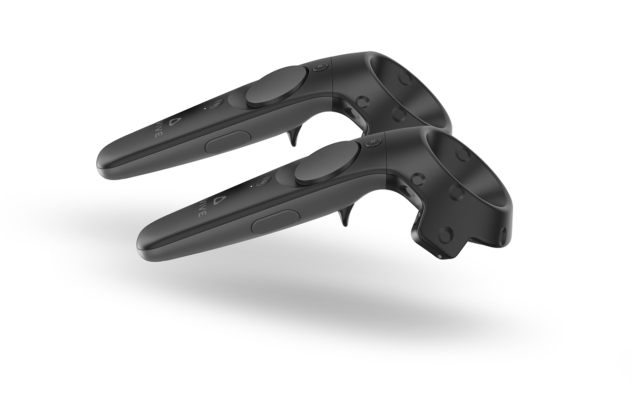
The HTC Vive comes with the best ones for now. They’re comfortable to handle and simulate with ease different objects you might hold (a paintbrush, a light saber, …). Playstation VR comes with the Playstation move controllers, who also do a good job of reproducing virtual objects, but are not as versatile as the Vive’s ones.
The Oculus Rift ones are not available yet as they haven’t passed the required federal regulations, but they should be a strong contender when they come out.
As they are part of each VR system, motion controllers can be a differentiator. Today they give the Vive a slight edge.
Taking it further, here’s a couple of advanced motion tracking systems that complete the picture:
- PrioVR: You wear several sensors at different locations so the system can track your whole body and reproduce it in the virtual space
- Stem System: A similar system to PrioVR, that includes motion controllers
- Leap Motion: Hand tracking system allowing you to interact with the world without any controller. The downside is that you don’t get any haptic feedback.
Controllers shouldn’t be much cause for concern if you’re trying to decide which system to develop for. Just remember that controls are important in a VR experience and you need to think carefully about how the user is going to interact with your world.
In fact, you can use clever controls as a way to stand out from other VR experiences.
Moving on to haptic devices, here are the most promising ones right now:
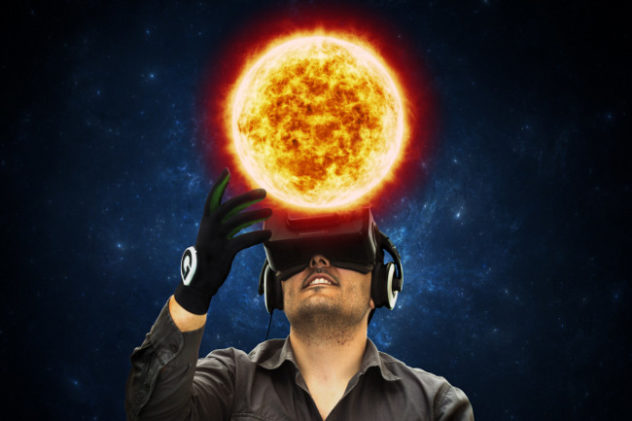
- Gloveone: It does what it says on the tin. These gloves let you manipulate objects and get the sensation of touch.
- Hands Omni: Another haptic glove, similar to Gloveone
- Tesla Suit: The most ambitious of all, it’s a complete suit that aims to give you full body haptic feedback
Since haptics are still in their infancy (even though they’ve been around for a while), making a clear cut decision on where to invest your efforts isn’t straight-forward.
If you want to develop your own haptic device, there’s still time to come onto the market with a differentiated product. If you’re thinking of adding haptics in your experience, it might be a bit premature. You can always add them later.
But, watch this space! When haptics start getting traction, you want to be ready.
Let’s Move!
To explore a virtual world, you need to move around. When your physical world is limited to a small room, it’s a challenge. Moving a few steps, tracked by cameras, only takes you so far…
Today, to move around, most people use a traditional joypad. It works, but it doesn’t make for a realistic and compelling experience. Also, as the world moves while your body doesn’t, it tends to give you motion sickness.
Several companies are working on the problem. They use different approaches to reproduce natural movement in a virtual environment. Here are the main solutions in development or on the market:
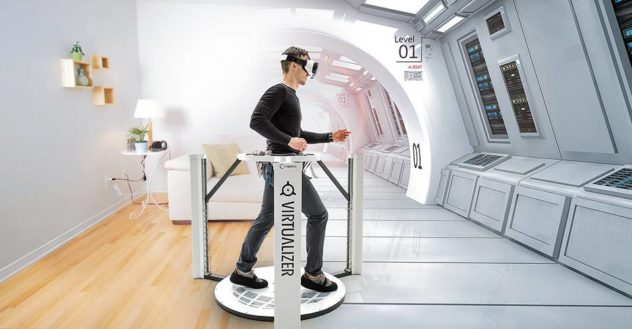
- Virtuix Omni: An omni directional treadmill that gives you the freedom to walk infinitely in any direction. You need special shoes to walk on it. It’s a passive treadmill, powered by the player walking on it.
- Infinadeck: Another treadmill, using a different technology than the Virtuix. It’s more bulky, but it gives you a more natural walking experience, as it’s an active (powered), flat treadmill.
- Cyberith: A slippery surface you can walk on to move around. Its main advantage is its size. To achieve it, it had to compromise on the experience. Sliding on a surface is not like walking on a treadmill.
- Space Walker VR: A compact treadmill that rotates so you can walk in any direction.
- Kat VR: Another solution similar to Cyberith. Here you’re walking on a curvy surface that keeps you in the center of the device. You’re not restrained by a ring like with other systems.
- Virtusphere: You’re walking inside a big sphere to move across the world (like a hamster). Not the most practical system due to its bulkiness.
- ImmotionRoom: A body tracking solution where you walk in a fixed spot in the physical world and that translates to walking around in the physical world (thank you for sharing Skarredghost!).
There’s some elegant solutions in this list. The challenge today is the encumbrance and the price. Also, hands-on tests show that most devices don’t offer natural or comfortable experiences yet.
There’s one alternative solution to treadmills that is worth mentioning. The idea behind it is to trick the brain of the user.
Here’s how it works. By altering what the users see, you can make them walk around in a circle, while they think they’re walking in a straight line. For example, you can use slightly curved lines and smartly placed visual aids to achieve this trick. If you have a big enough room, it can be a natural and cheap alternative to treadmills.
So, what’s the future of motion solutions?
For now, all these solutions will be limited to high-end VR installations, the equivalent of a home cinema or movie theater for films.
The majority of people will move around the world with a joypad.
Over time, as new solutions come on the market and the technology improves, I predict people will start adopting them more widely.
Today, if you have a ground-breaking idea that will solve the motion problem in an elegant and cheap way, this is a market you can go after.
Otherwise, this is an area worth keeping an eye on, but not one to worry about yet. You can stick to implementing traditional motion controls with a joypad for now.
Did You Hear That?
For a virtual world to feel alive, you need to hear it. You want to hear people talking, the wind blowing and a river flowing.
And an important part of the experience is sound localization. You need to hear the direction of the sound and its distance from you. As you get closer to its source, the sound gets louder. And as you move away, it fades out.
Current technology is already up to the task and can render 3D sound in a VR environment.
Here are the main solutions for localized sound:
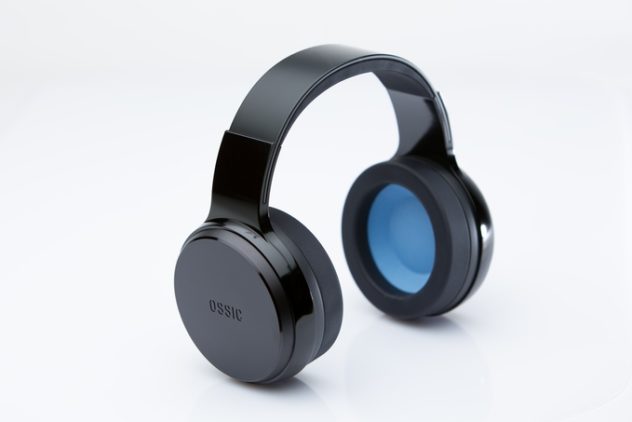
- Two Big Ears: Now part of Oculus, it’s a platform to reproduce 3D sound.
- Sennheiser Ambeo: Another platform for 3D sound, the first demos provided a convincing experience.
- Aurelia Soundworks: It’s a platform to record, process and reproduce 3D sound.
- RealSpace3D: A system that reproduces a realistic and immersive 3D sound experience through standard stereo headphones.
- Visionics: Similar to Aurelia, it’s a system to record and reproduce 3D sound for virtual reality and gaming.
- Ossic: They’re headphones using motion sensors to track the position of your head and alter the sound accordingly.
- 3D Sound One: Like Ossic, it’s a pair of headphones that positions the sound accurately in a 3D environment based on the position of your head.
Sound is an important part of a VR experience. Fortunately, game engines include sound localization by default, so you don’t have to put any extra work for that part.
Still, sound is key and you need to leverage it as best as you can to make the experience more immersive. And to give a more realistic experience to the user, you might want to consider using one of the platforms about to record and reproduce 3D sound.
Now that we’ve covered the 4 main aspects that contribute to an immersive VR experience, let’s have a look at what the future holds for VR.
The Future Is Starting Now
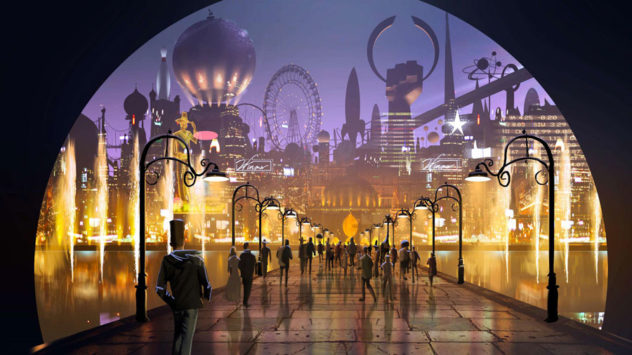
Let’s picture an ideal future.
Imagine you could just say: “Enter VR” and be transported to a VR world that is indistinguishable from reality. You would embrace that world with all your senses: sight, touch, hearing, smell and taste. You would also explore it like in real life: walk around, drive a car, fly a helicopter.
You wouldn’t have to wear any heavy gear. The whole simulation would be fed directly to your brain.
This is the ultimate goal we can strive for. Such a future is probably 20-30 years away, though.
On the way to that future, here are the steps that I foresee.
In terms of headsets, we’ll move towards higher resolutions, a higher field of view and lighter, wireless headsets. Headsets that can both handle mixed reality and completely block the outside world will be the ultimate target for such technology.
To get there, we’ll need computers that can run photo-realistic games at 6k+ resolution and stream wirelessly to the headset. We’re talking 5-10 years from now to get both the computers and headsets.
The next step will be to move to contact lenses, the ultimate lightweight and discreet headset. I’m counting on 15-20 years for the technology to be ready.
Finally, the last step is to transmit all the images directly into your brain. This is where we reach the 20-30 years barrier.
For the haptics, the goal will be to wear a suit that translates all your movements in the virtual world and gives you physical feedback from your interaction with it. The first suits are already in development, but until we get a realistic experience at a decent price, we’re talking 5-10 years.
Haptic gloves should ultimately give you all the nuances you get when you touch various surfaces. Not an easy task. 10-15 years to get there probably. Then, we’ll move to brain simulation.
Today, an elegant solution to move around the world in a natural way doesn’t exist. So it might be 10-15 years until we get it. But it’s pure conjecture there.
The most promising way to do it right now is to use methods to trick your brain. Ultimately, in 20-30 years, we’ll have a complete virtual simulation run directly by your brain.
Sound is one of the most straight forward area. We already have solutions on the market that reproduce 3D sounds. It’s mostly a matter of price reduction until we get mass adoption. And ultimately, you want to reduce the size of the headphones (5-10 years) and finally get rid of them through brain simulation (20-30 years).
Finally, experiences themselves will get refined over the years as people learn to master VR storytelling, as more and more experiences are created and as game engines adapt to VR. Ultimately, anyone will be able to create VR worlds, without the need for any programing or artistic talent for creating environments.
High Fidelity and Linden Lab, among others, are building a kind of Metaverse. In High Fidelity, anyone can create their content and add it to the virtual world. If we carry on in this direction, in 5-10 years, anyone could create their own alternative living space in VR. It could be a private place they can decorate the way they want and where they can invite their friends.
Graphics and AIs will evolve to give us the illusion of living in a real world. So we can live in that virtual reality, meet people there, work, play games, watch films or go to concerts.
In terms of content, we’ll see a mixture of VR games, films, entertainment and education programs. They will either complement or replace the media we currently consume. I think it will revolutionize education, business, gaming, shopping and social interactions.
I don’t expect VR films to replace traditional films. No. I see it as a new media, with the potential for an explosion of creative endeavors that can re-energize the film industry.
As technology evolves and prices go down, the adoption of VR and AR will accelerate. In 10 years, billions of people will be using it. So you’ll better get in there if you want to be in good shape in the VR industry when that happens.
Evolution
To sum it all up, here’s how I see the market evolving and the main VR players emerging in the next 3-5 years.
In terms of headsets, Playstation VR is today in the best position to reach critical mass, thanks mostly to its PS4 install base.
Now, here’s the big question. Will Microsoft come in time with their Hololens to grab decent market share on the console market? I doubt it. An alternative is for them to make both Oculus Rift and HTC Vive compatible with the Xbox Scorpio. If they’re willing to risk cannibalization of their Hololens.
My guess is that they will strike a deal. So the Rift and Vive will be playing catch-up with the Playstation VR, probably towards the end of 2017.
At the same time, we’ll see the arrival of Magic Leap and the mixed-reality battle will start between them, the Hololens and the Meta. And I expect other competitors to come in, who might become major players in the field.
Soon after, around 2018-19, we’ll see the second generation of VR and AR headsets coming out. They’ll have higher resolution, a wider field of view and are likely to be lighter. The transition to wireless high-end systems should also start around that time.
Only after 2020 will we see different technologies coming in (projection of light onto the retina and much later, contact lenses). This will be a prime time for new players, with disruptive technology, to come in.
In terms of controllers, haptic devices, treadmills, headphones and suits, things are still blurry today.
There isn’t a clear winner for the controllers today. The HTC Vive provides the best controllers so far, but it’s likely we’ll see better solutions coming along. Right now, each major headset manufacturer provides or intends to provide (Oculus) controllers. Whether they’ll keep fighting for that business or let others dominate remains to be seen.
The main problems with treadmills is their size and price today. No one has come with a suitable solution yet. This is clearly an area for innovation. The most promising solutions so far are the Cyberith and Infinadeck. But, I expect another company to take the cake.
Spatial headphones and 3D sound platforms are available today and will keep spreading. There’s no clear winner in sight. It’s not a sector in need for lots of new technology, but sound is crucial to an immersive VR experience.
So, the focus on that area will remain for years to come. We’ll transition to lighter headphone solutions and plug-and-play systems so that any developer can provide spatial audio.
Haptic devices are still in their infancy, but this looks to me as the most promising area. The market is still wide open. If you’re able to come up with a solution that provides realistic haptic feedback at a reasonable price, you could dominate that market pretty quickly.
Haptics will take VR to the next level and can greatly accelerate VR adoption.
Where will you be in 5 years?
A lot of new technology is needed to provide the ultimate VR experience. That’s why it’s a fast-changing market, with many players involved.
According to AngelList, there’s already 891 referenced companies in the VR space only, with a $4.6M average valuation (and it will be more when you click the link). No wonder it’s confusing…
Now that you’ve read this article, you should have a better understanding of the market. You know where it’s heading and where the opportunities are right now.
Of course, the areas we explored don’t cover everything that’s happening in VR. But going back to fundamentals is key to understand what matters and where the valuable opportunities are.
As the industry is progressing quickly, you’ll have to follow the market closely to understand the new trends and get a better sense of the technological maturity of each area. It will be a fascinating story to follow, one you can be part of, if you’re ready for it…
So, have you decided to make the VR jump? If so, where are you going to focus your efforts and what product or service do you want to create?
Share your thoughts in the comment section below.
And when you join, you get a FREE guide: 8 Tools & Resources Every New VR Creator Needs, so you can start building your first product today
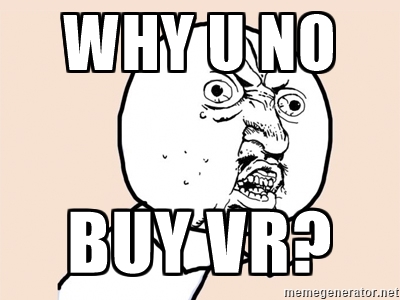

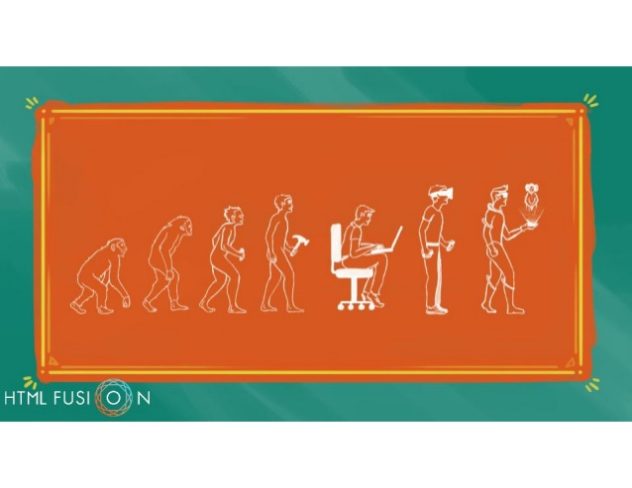








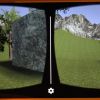

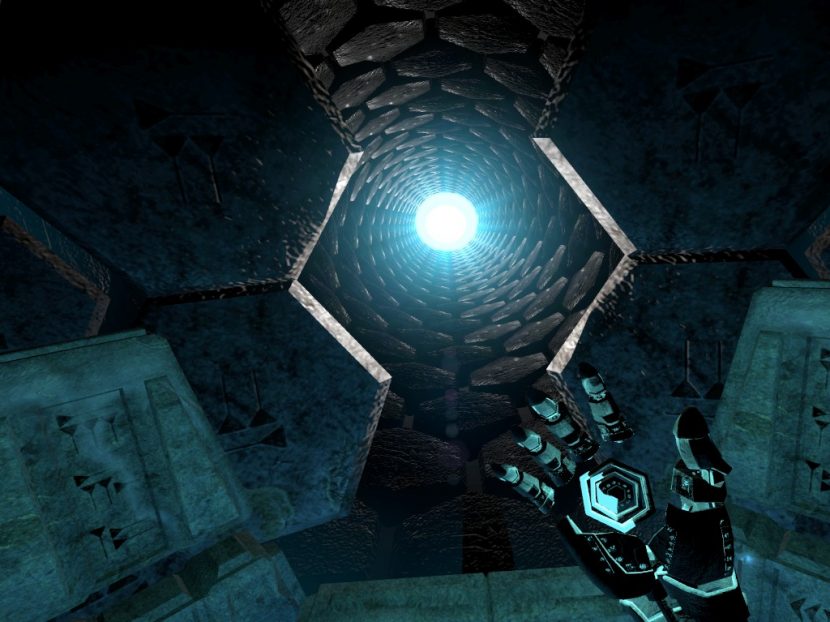
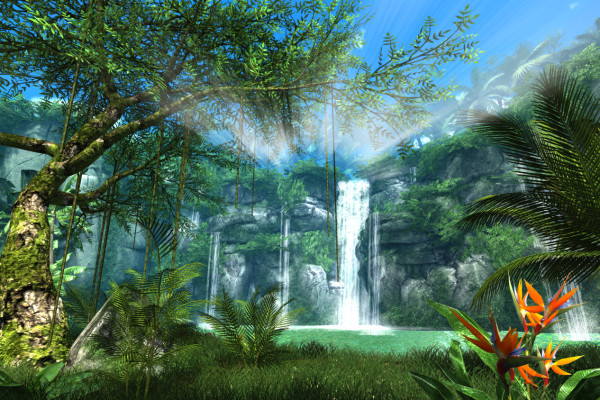
skarredghost
September 8, 2016Antoine Ribordy
September 8, 2016